#Near Earth objects
Text
A new artificial intelligence algorithm programmed to hunt for potentially dangerous near-Earth asteroids has discovered its first space rock.
The roughly 600-foot-wide (180 meters) asteroid has received the designation 2022 SF289, and is expected to approach Earth to within 140,000 miles (225,000 kilometers). That distance is shorter than that between our planet and the moon, which are on average, 238,855 miles (384,400 km) apart. This is close enough to define the rock as a Potentially Hazardous Asteroid (PHA), but that doesn't mean it will impact Earth in the foreseeable future.
The HelioLinc3D program, which found the asteroid, has been developed to help the Vera C. Rubin Observatory, currently under construction in Northern Chile, conduct its upcoming 10-year survey of the night sky by searching for space rocks in Earth's near vicinity. As such, the algorithm could be vital in giving scientists the heads up about space rocks on a collision course with Earth.
Continue Reading.
63 notes
·
View notes
Text

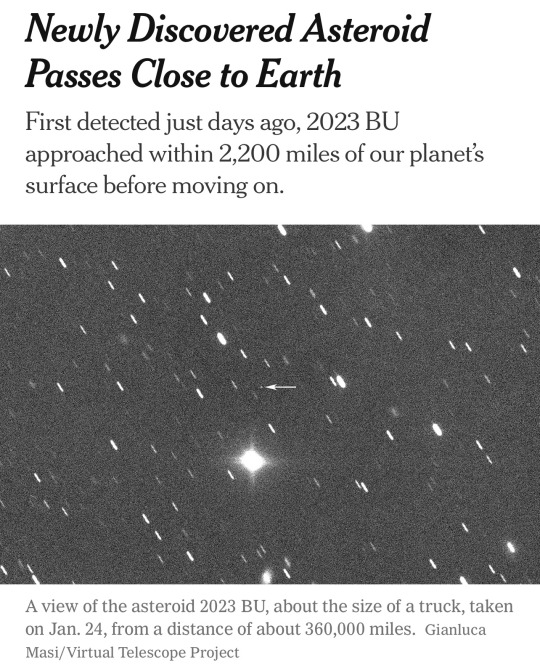
The path of Asteroid 2023 BU brought it between the Earth and some of our man-made satellites. (source)
88 notes
·
View notes
Text
DART All Set To Crash Into Asteroid Dimorphos
youtube
This animation depicts the asteroid moonlet Dimorphos being approached by DART and then crashing with it.
In order to demonstrate a method for diverting potentially deadly space rocks headed for Earth, NASA's Double Asteroid Redirection Test (DART) mission will deliberately crash a spacecraft with an asteroid on Monday.
The Double Asteroid Redirection Test, or DART, will collide with the asteroid moon Dimorphos on September 26 at 7:14 p.m. EDT (23:14 UTC). At 6:00 p.m. EDT, NASA TV will begin airing live coverage.
DART will be transmitting photographs every per second throughout the last hour of the mission when Dimorphos transforms from a point of light to an object that fills the full camera frame.
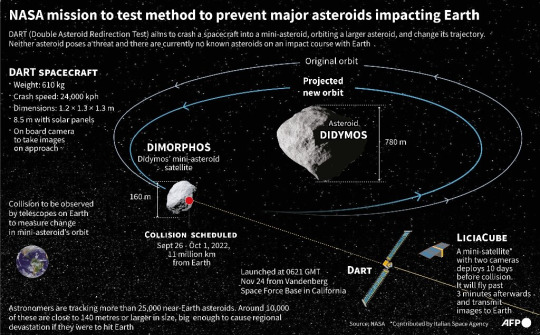
Dimorphos' orbit around Didymos, its bigger parent asteroid, will change as a result of DART's collision. This alteration will be visible to telescopes on Earth, providing proof that the test was successful.
DART's CubeSat will also monitor the impact, and the Hera probe from the European Space Agency will go to Dimorphos in 2026 to examine the crater it left behind.
For billions of years, asteroids have been colliding with Earth. Finally, mankind is responding, starting with DART.
Why is DART crucial?
An asteroid 6 miles (10 kilometers) broad that impacted the Earth 66 million years ago wiped off the dinosaurs and caused a worldwide extinction. Although some evade detection, we believe we have located the majority of asteroids this large, and none are headed directly for Earth.
But it doesn't take anything that big to wreak havoc. An asteroid that is just 50 meters (160 feet) broad has the potential to kill a lot of people under the appropriate circumstances.
Around 20 meters wide, the tiny asteroid that burst in 2013 near Chelyabinsk, Russia, injured 1,500 people and destroyed 7,200 structures in six towns.
Near-Earth asteroids, also known as near-Earth objects, are asteroids that pass by Earth on their orbits (NEOs). If we discover a dangerous NEO on path to strike Earth with enough time to spare, we may be able to gently push it off course.
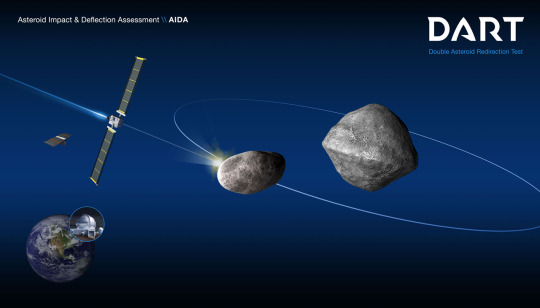
The kinetic impactor method is what is used in this. By crashing with the asteroid Dimorphos, DART will put this strategy to the test and demonstrate how an asteroid's orbit may be changed by a spacecraft.
When will DART have an effect on Dimorphos?
youtube
At 7:14 p.m. EDT on September 26, 2022, DART will affect Dimorphos (23:14 UTC). At 6:00 p.m., NASA TV will begin airing live coverage. The Johns Hopkins Applied Physics Laboratory in Baltimore, Maryland, is in charge of running the mission.
DART's last broadcasts will take 38 seconds to reach Earth at the speed of light. The spacecraft launched on November 21, 2021, and its 10-month voyage will come to an end with the hit.
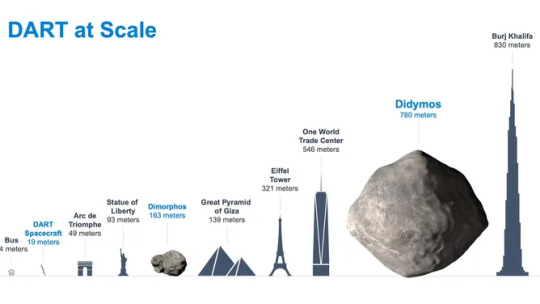
What will the closing minutes of DART entail?
Till the very last hour, and particularly the very last five minutes, we won't see anything.
Didymos and Dimorphos are already visible to DART, although they are still only a single point of light. DART is growing quickly, and Didymos and Dimorphos are both rather tiny cities. DART will approach Dimorphos at a scorching speed of 6.6 kilometres (4 miles) per second, whereas previous asteroid missions like Hayabusa2 at Ryugu and OSIRIS-REx at Bennu have featured leisurely approaches and plenty of beautiful photos.
Didymos is between Ryugu and Bennu in terms of size, being around 780 metres (2,560 feet) wide. Dimorphos, with just 160 metres (525 feet) wide, is smaller than both.
Four hours before to impact, the DRACO telescopic camera on board the spacecraft will begin sending photos to a group of navigational algorithms referred to as SMART Nav. The task of SMART Nav is to locate Dimorphos and manoeuvre the spaceship into collision on its own.
One of those photos will be sent to Earth every second or so. Although DRACO's detector has a resolution of 2560 × 2160 pixels, the pictures are reduced in size so that DART can relay them quickly—to only 512 by 512 pixels.
The DART crew and NASA TV will both see these photographs at the same time. What can we anticipate to see?
With an hour till impact, Dimorphos should finally be visible to DART as a distinct point of light, albeit one that is just a few pixels wide.
Both asteroids should still be visible in the camera frame four minutes before collision. Dimorphos will be roughly 20 pixels wide, whereas Didymos will be about 100 pixels wide.
Two minutes before impact: Dimorphos will be about 45 pixels wide, and it will be obvious that DART is approaching.
Terik Daly, the DRACO deputy instrument scientist, predicted that DART will be able to observe stones and rocks on Dimorphos as large as vending machines 20 seconds before impact. If everything goes as planned, Daly told The Planetary Society, "the last few milliseconds before impact will enable us to observe features on the surface with a pixel size of around ten centimeters (about 4 inches) per pixel."
Dimorphos will be completely vaporized when DART collides with it. Depending on the makeup of Dimorphos, the resultant crater might be as large as 20 meters (66 ft) across. The time it takes for signals to travel at the speed of light to reach Earth is 38 seconds by the time we see DART's broadcasts come to a stop.
How will we know if DART worked?
DART's success will eventually be determined by measurements made using ground-based telescopes.

Didymos and Dimorphos appear to Earth as a single point of light. As the two asteroids pass in front of one another, that point of light changes. This makes it possible to calculate Dimorphos' orbital distance from Didymos.
Dimorphos's orbital period should be shortened by the impact of DART from about 11.9 hours to 11.8 hours, demonstrating the effectiveness of the kinetic impactor method.
The Lowell Discovery Telescope in Arizona, Las Campanas Observatory in Chile, the worldwide network of Las Cumbres Observatory, and the Magdalena Ridge Observatory in New Mexico are just a few of the telescopes that the DART team uses for its studies.
What will the CubeSat for DART do?
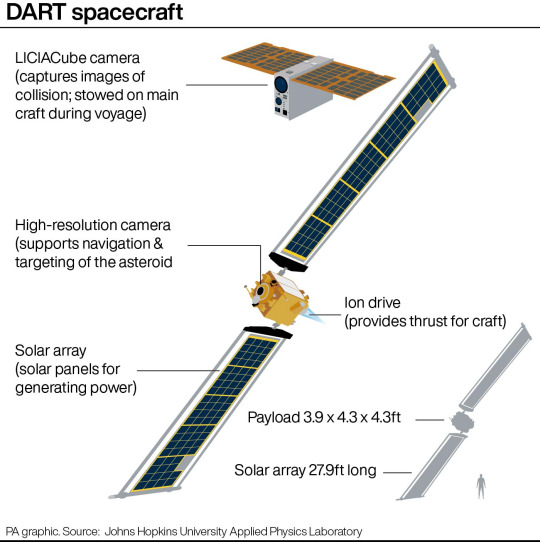
DART will launch a CubeSat called LICIACube, the Light Italian Cubesat for Imaging of Asteroids, about 10 days before impact.
The Italian Space Agency's LICIACube was created with the intention of observing DART's impact, the plume it produces, and maybe the resultant crater. It will use two cameras called LUKE and LEIA to do so from a distance of around 50 kilometers (31 miles).
You shouldn't anticipate LICIACube to send back photographs straight immediately since the CubeSat can only interact with Earth at modest data speeds, which might take months.
How will Hera look into the effects of DART?
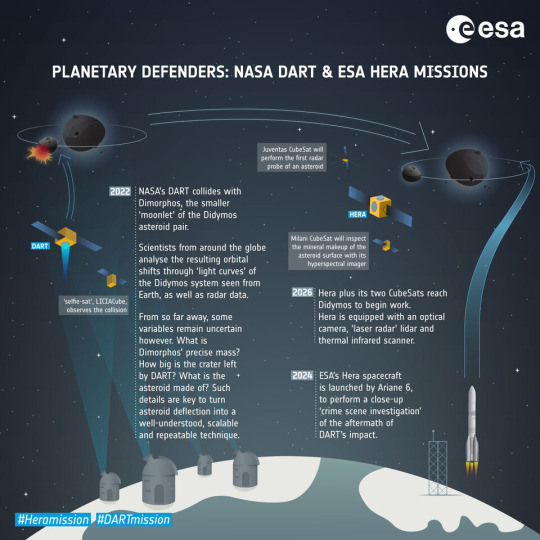
The European Space Agency will deploy a mission dubbed Hera in 2024 in order to thoroughly investigate what took place when DART collided with Dimorphos. Hera will land in 2026 with a collection of tools to explore Didymos and Dimorphos, particularly the impact crater that DART created. The spacecraft is equipped with a laser altimeter to produce 3D maps and an infrared camera to measure the temperatures of asteroids and learn more about their surface characteristics.
Additionally, Hera will launch two of its own CubeSats. Before trying to land on Didymos, Dimorphos, or both asteroids, they will investigate the innards of the asteroids.
What distinguishes DART from Deep Impact?
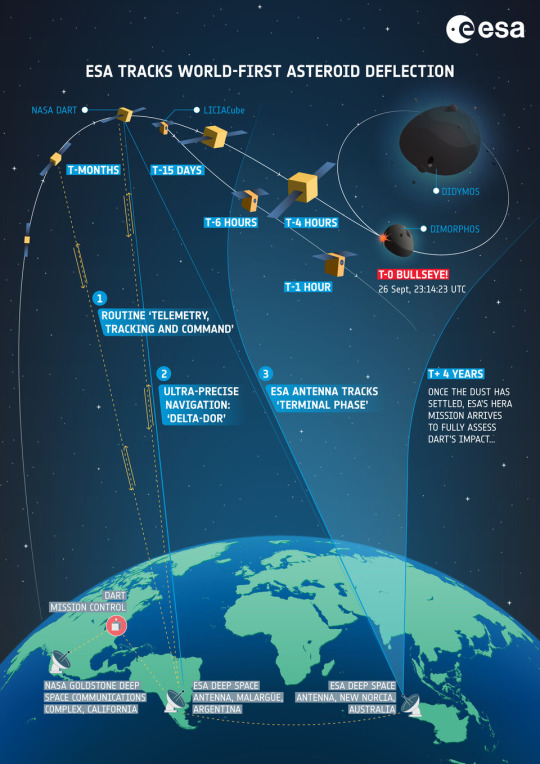
Planetary protection was not the goal of Deep Impact. The spacecraft, which had been launched in January 2005, hit Comet Tempel 1 on July 4, 2005. The comet likely originated from the Oort cloud, a ring of ice debris that surrounds our solar system, since the collision showed it to be around 75% empty space.
Deep Impact was given the new designation Deep Impact (EPOXI) and despatched to Comet Hartley 2 after completing its mission at Tempel 1. Extrasolar Planet Observations (EPOCh) and Deep Impact Extended Investigation make up the double-nested acronym EPOXI (DIXI).
After Hartley 2, NASA planned to deploy Deep Impact (EPOXI) to a third comet, however in August 2013, contact was lost with the probe.
What is the cost of DART?
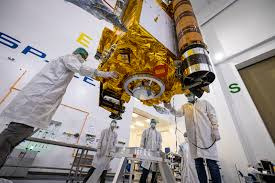
Costing $324.5 million is the DART mission. The spacecraft itself cost $308 million for NASA's planetary defense program, as well as $68.8 million for launch services and $16.5 million for operations and data analysis.
How else might asteroid strikes be avoided?
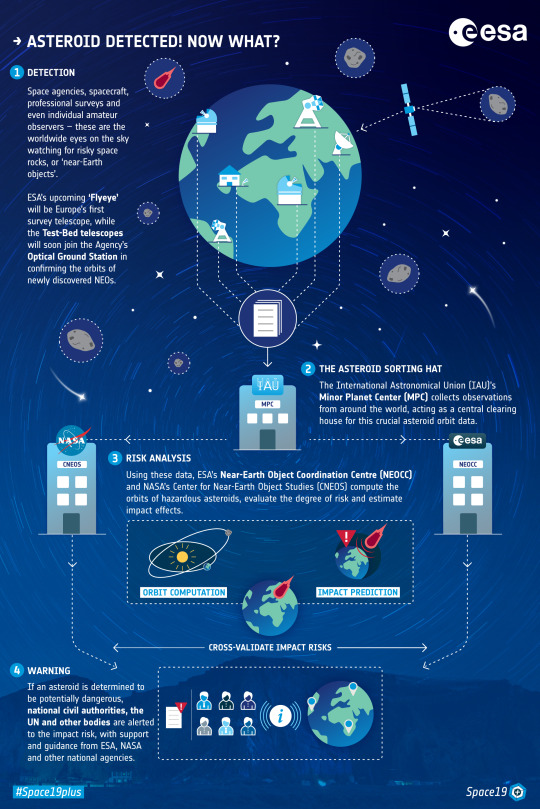
To prevent harmful asteroids from striking the Earth, a considerably bigger jigsaw must be pieced together than DART.
We must first look for nearby things. The fraction of asteroids we've discovered will increase significantly with the launch of the NEO Surveyor mission.
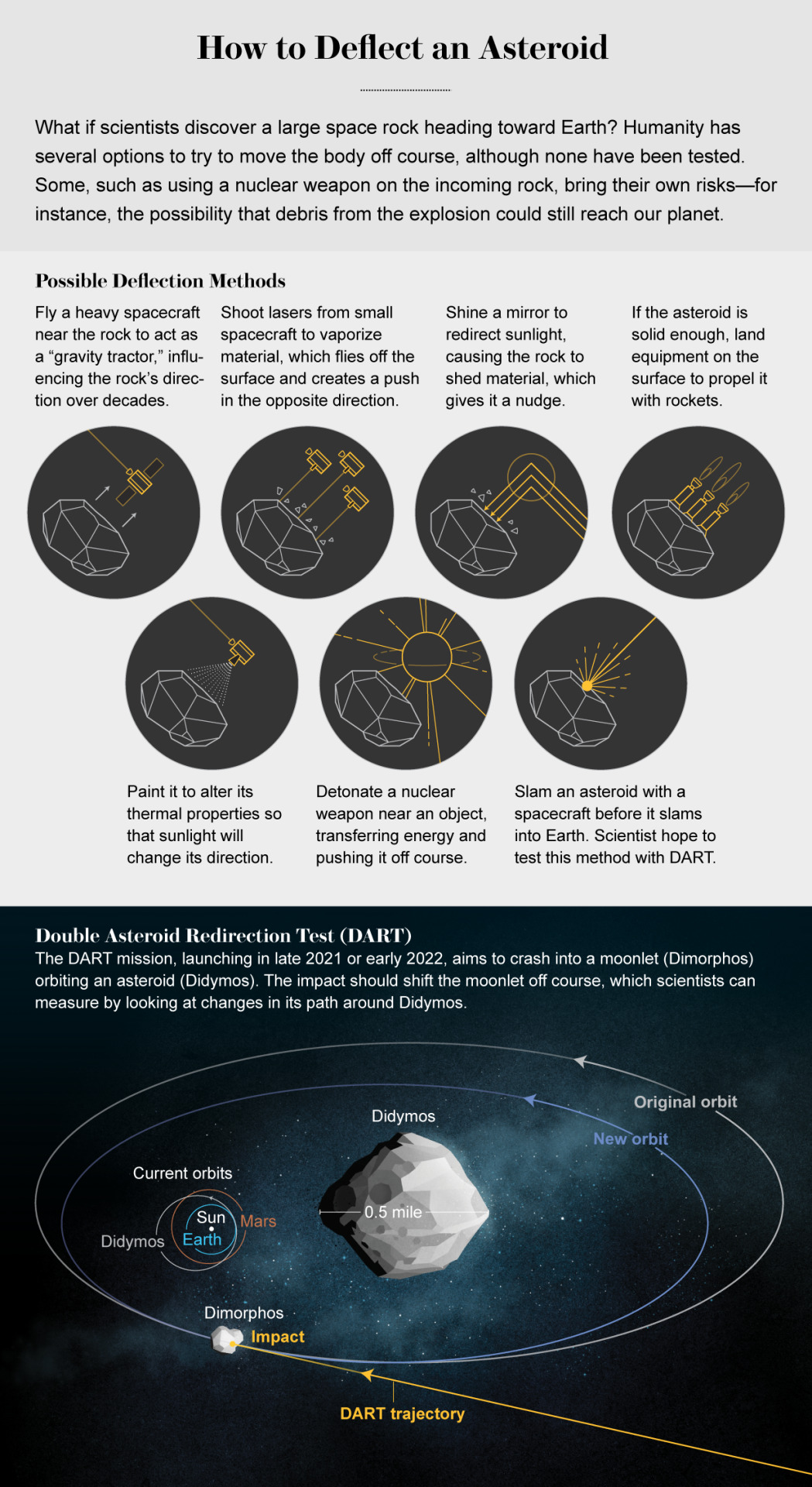
An asteroid must be tracked and studied after discovery.
It is important to support asteroid-hunting astronomers via Grants since the world's professional sky surveys cannot do all of this job on their own.
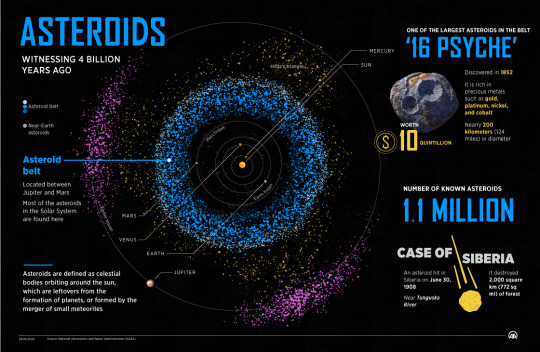
We can significantly lower the likelihood that our planet will be hit by a hazardous space rock by locating, tracking, and describing asteroids, and then testing deflection measures.

~ Jai Krishna Ponnappan
Find Jai on Twitter | LinkedIn | Instagram

#NASA#DART#Double Asteroid Redirection Test#Asteroid#Dimorphos#Asteroid Diversion#NEO#Near Earth Objects#Eart Protection#Space Weather
7 notes
·
View notes
Text

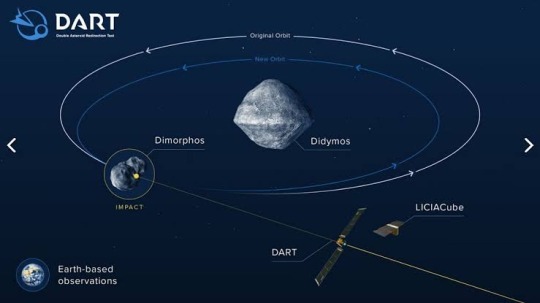
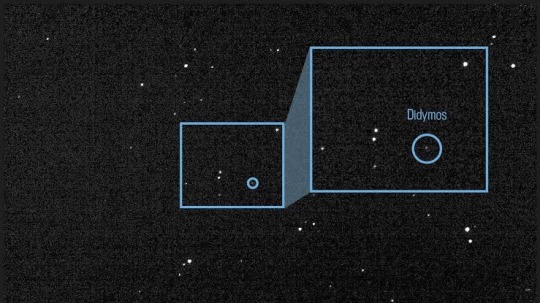
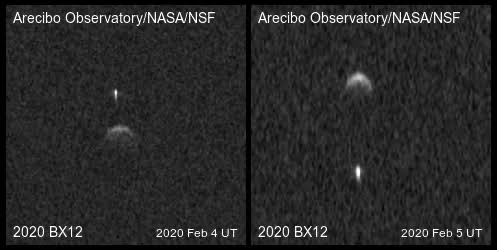
Double Asteroid Redirection Test (DART) is a NASA space mission aimed at testing a method of planetary defense against near-Earth objects (NEOs). Launched from Earth in November 2021, the mission will deliberately crash a space probe into the minor-planet moon Dimorphos of the double asteroid Didymos to assess the future potential of a spacecraft impact to deflect an asteroid on a collision course with Earth through a transference of momentum. The asteroid poses no actual threat to Earth; it was merely selected for the test. Impact- Tuesday 27/9 09:14 AEST
4 notes
·
View notes
Text
Happy birthday to 3753 Cruithne
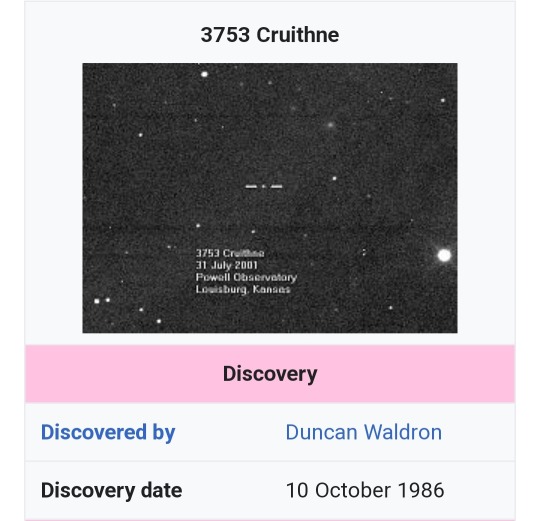
1 note
·
View note
Text
NASA says three asteroids will pass Earth by a close margin today; Check speed, size and more
Just yesterday, 3 asteroids passed Earth by a close margin. While none of them were considered “Potentially Hazardous Asteroids”, the biggest of them was 150 feet wide, making it almost as big as an aircraft. Such close approaches by celestial objects such as asteroids and comets serve as a reminder of the dangerous potential they possess and the need to continuously monitor their trajectories.…
View On WordPress
#Asteroid 2024 EO3#Asteroid 2024 FN1#asteroid belt#asteroid earth#asteroid launcher#asteroid nasa#asteroid near earth#asteroid strike#asteroid today#asteroids#asteroids near earth#busC#earth#latest asteroid#NASA#nasa asteroid#NASA asteroid 2024 EO3#NASA Asteroid 2024 FN1#nasa asteroid today#near earth asteroids#near earth objects#two asteroids
0 notes
Text
Thales Alenia Space proporcionará equipos de comunicación a la misión NEO Surveyor de la NASA
El telescopio de la NASA que detectará asteroides potencialmente peligrosos para la Tierra
Continue reading Thales Alenia Space proporcionará equipos de comunicación a la misión NEO Surveyor de la NASA
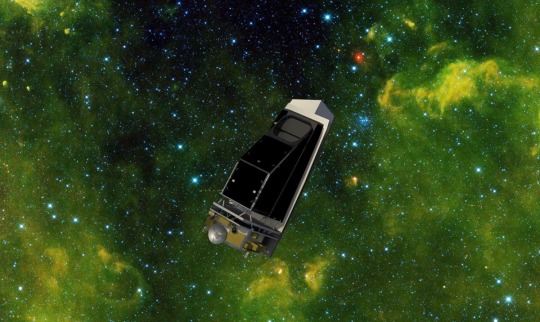
View On WordPress
#Asteroides#Ball Aerospace#cometas#Defensa planetaria#Equipos de comunicación#JPL#Laboratorio de Propulsión a Chorro#Leonardo#Misión espacial#Nasa#Near Earth Objects#NEO Surveyor#telescopio#Thales#Thales Alenia Space#TWTA
0 notes
Text
House-sized asteroid hurtling towards Earth for close approach, NASA reveals
With its advanced tech such as the NEOWISE telescope, Atacama Large Millimeter/submillimeter Array (ALMA), Pans-STARRS1 and Catalina Sky Survey, NASA has revealed details about an asteroid that will come close to Earth. An asteroid, given the designation of Asteroid 2023 TC1, is on its way towards Earth and could make its closest approach to the planet today, October 13.
NASA has tracked this…

View On WordPress
#Asteroid#Asteroid 2023 TC1#asteroid belt#asteroid earth#asteroid launcher#asteroid NASA#Asteroid near earth#asteroid strike#asteroid today#asteroids#asteroids near earth#Earth#latest asteroid#NASA#NASA asteroid#NASA asteroid 2023 TC1#NASA asteroid today#near earth asteroids#near earth objects
0 notes
Text
“These findings add to our fundamental understanding of asteroids and build a foundation for how humanity can defend Earth from a potentially hazardous asteroid by altering its course.” Nicola Fox, NASA’s associate administrator for the Science Mission Directorate
1 note
·
View note
Link
The asteroid's upper size estimate is just short of the world's tallest building
A newly discovered, "potentially hazardous" asteroid almost the size of the world's tallest skyscraper is set to tumble past Earth just in time for Halloween, according to NASA.
The asteroid, called 2022 RM4, has an estimated diameter of between 1,083 and 2,428 feet (330 and 740 meters) — just under the height of Dubai's 2,716-foot-tall (828 m) Burj Khalifa, the tallest building in the world. It will zoom past our planet at around 52,500 mph (84,500 km/h), or roughly 68 times the speed of sound, according to NASA (opens in new tab).
At its closest approach on Nov. 1, the asteroid will come within about 1.43 million miles (2.3 million kilometers) of Earth, around six times the average distance between Earth and the moon. By cosmic standards, this is a very slender margin. ...
0 notes
Link
And I do quote...
NASA's Double Asteroid Redirection Test (DART) spacecraft is hurtling toward the asteroid Didymos and its moonlet Dimorphos, and it'll reach its target tonight (Sept. 26). At 7:14 p.m. EDT (2314 GMT), if all goes well, DART will crash into Dimorphos in an attempt to alter the moonlet's trajectory. The mission is meant to test the theory that this technique could be used to divert an asteroid heading straight for Earth.
0 notes
Text
The Origin of the Solar System.
The asteroids hold secrets about how our solar system formed. Most were part of ‘failed planets’, which began growing alongside the surviving planets of today, but were shattered by violent collisions in the early Solar System. This panel is about the scientific investigation of the asteroids and the way it can reveal the cataclysmic details of planet formation.

#solar system#near earth objects#Near-Earth Asteroids#International Asteroid day#30 june#European Space Agency (ESA)
0 notes
Text
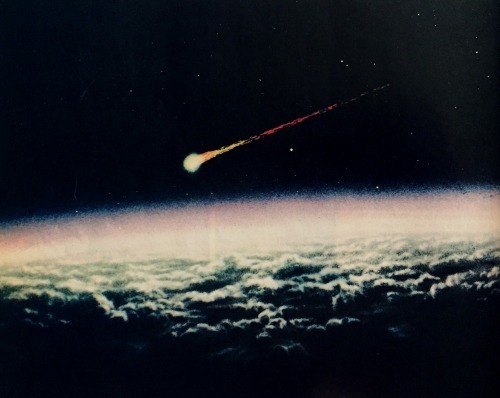
#asteroid#sky#space#astronomy#celestial#cosmic#celestial object#minor planet#near-Earth object#meteor#comet#solar system
33 notes
·
View notes
Text
august after clawing his way up out of a grave thinking hes in hell from seeing everything looks like it was set on fucking fire

#him dying right before everything happened savdd his life#nothing special about him . just some normal kid who died of natural causes#man didnt know what he was signing up for 💀💀💀#since he was buried underground his body didnt get baked into stone#he was dead for a few good centuries eternal rest put on pause when he wakes up and starts choking on dirt#his grave was near where a star exitted the earth’s crust . so he was brought back .#things that shouldnt be alive coming to life 😁doesnt stop at inanimate objects#a shard of the star tjat was lost in takeoff shot right down into its grave and lodged itself in his chest .#like a new heart#and for the next few years the lifegiving energy from it started regrowing him from just dusty old bones
7 notes
·
View notes
Text
kny x earth to echo au. my most self indulgent piece yet
#kny au#earth to echo au#loserboy giyuu posting#i made a little thing for it way back but never posted i think? i mightve posted the video i made it into#it was just the shot of giyuu walking towards a lone rock on a cliff that had 'sabito' carved into it & a framed pic of the two of them#leaned against the side of it. i think i edited out the smouldering object(makomo) for the post so it was a general modern au#still had my likes on shuffle and Alien(uss) played and it scratched my brain just right to get me thinkin abt it again#premise of the au is when they were kids they were fucking around near the cliff like they usually did but it was slick from the recent rai#and sabito slid off the edge into the rocky current below and giyuu screamed. they never found his body and closed off the area above#the cliff w a chainlink fence that has warnings posted all along it- every year on sabito's birthday he hops it & chills by his empty grave#tsutako dies in a car crash and giyus all alone. hes contemplating offing himself- following after sabito that year when he visits his grav#but he finds it *smouldering* and finds a beaten up chunk of metal- and people approaching w flashlights. he bolts for the woods and takes#it home w him where he discovers its Alive but severely injured- and also that it has tech *far* beyond what they have#easter egg & pirate map shenanigans ensue- sanemi & genya only surviving shinazugawas get roped into it- they have a blast!#blasts and shots fired at them from the very angry government officals chasing them down to find the threat from space.#im an. ALIEN! CRAWLING UNDER HUMAN~SKIN#LET GO! OF EVERYTHING YOU THINK~YOU KNOW.#HANG TIGHT#PERMISSION TO ABORT: DENIED.#PURE HEART#YOURE EVERYTHING YOU THINK~YOU AREN'T#ALIEN! CRAWLING UNDER HUMAN~SKIN. ALIEN! CRAWLING UNDER HUMAN~SKIN. ALIEN! CRAWLING UNDER HUMAN~SKIN.#ough this song so good#its made me think of a few scenes like giyuu dumpster diving & sanemi thinking hes homeless being their first interaction#sanemi snatching him from sight when he sees uniformed people & taking giyuu to hide and figure shit out as his place w genya#the three of them skidding around corners w ppl hot on their trail#them casually eating at a fast food place & starting to warm up to eachother (makomo talking thru the phone & learning more abt humans)#giyuu wildly driving away from shots w sanemi shooting back out the window- genya holding on for dear life & makomo dismantling their cars#some scene of sanemi being injured real bad- giyuu kissing him & telling him hes not allowed to leave them like that#o u g h
6 notes
·
View notes
Text
Yellowstone's history of hydrothermal explosions over the past 14,000 years -- ScienceDaily
Yellowstone’s history of hydrothermal explosions over the past 14,000 years — ScienceDaily
While much of public attention on Yellowstone focuses on its potential to produce large supereruptions, the hazards that are much more likely to occur are smaller, violent hydrothermal explosions. Hydrothermal explosions occur when near-boiling water suddenly flashes into steam, releasing large amounts of energy. The energy release fractures the rock downward, often leaving behind a crater. The…

View On WordPress
#Explosions#Geology; Near-Earth Object Impacts; Oceanography; Mining; Early Climate; Fossils; Origin of Life; Anthropology#History#hydrothermal#ScienceDaily#Years#Yellowstones
8 notes
·
View notes